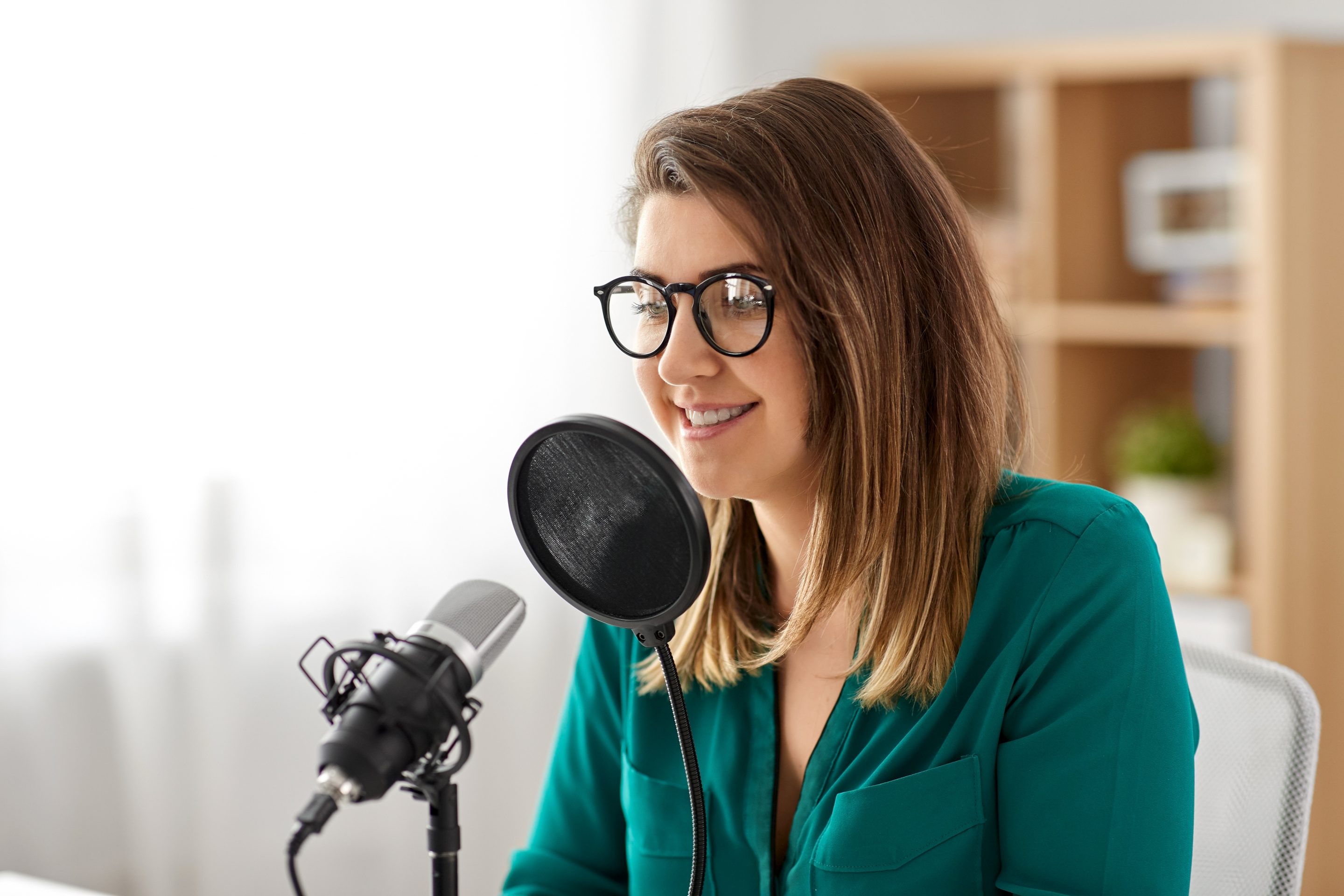Some children are early risers. I was one who had to be woken up at least twice, and hustled out the door in a rush if I was going to catch my bus to school. My success rate was a generous 50-percent, which means the rest of the time my mother would have to load me into the car and make the 10-minute drive into town, singing along with the radio the entire way. Twenty-some odd years later I can still hear the Kent and Alan Morning Show on STAR 101.5 coming through the speakers in the family minivan.
These days, it’s my turn to make the daily drive, dropping off my son. But despite the family tradition, I don’t think I could name a single radio DJ. Not because there aren’t any shining personalities, but because – for the most part – I’ve traded in my radio dial for content on demand in the form of podcasts.

I’m not the only one, either. Over the last few years, podcasts have been quickly gaining in popularity. One of the biggest reasons is the shift away from desktops and towards mobile devices. As people rely more heavily on mobile devices, it becomes easier than ever to access, download and listen to podcasts whenever, wherever.
The lack of downtime also makes it harder for individuals to find the time to sit down and read a book or watch TV without distraction. Podcasts are perfect for multitasking and make it easy to be entertained while on a commute, exercising, getting housework done and more.
What exactly is a podcast?
Chances are you already know. According to The Podcast Consumer 2019, seventy percent of Americans have heard of podcasts – that’s an additional 20-million more people over the 2018 statistic. When the researchers at PodcastInsights put the question (How would you describe a podcast to someone who has never heard of them before?) to their listeners, everything could be summed up in roughly four bullet points:
- Free
- On-Demand
- Niche
- Talk Radio
Podcast is actually a portmanteau of “iPod” and “broadcast,” and started mostly as independent individuals sharing a message and building a community of people with similar interests. That still exists, but today you can find podcasts from:

- Individuals
- Companies (Large and Small)
- Radio Networks (Like NPR)
- TV Networks (CNN, Fox, ESPN, Etc.)
- Comedians
- Storytellers
- Churches
- And more
Podcasts don’t have a pre-determined length, format, production level or style and can be broken up into seasons or released individually on any kind of schedule (although for SEO purposes, regular content is always better).
Podcasts Are Changing Digital Marketing
When it comes to marketing, “content is king” is one of our favorite phrases to highlight its importance. The more quality content you can produce, the further you can reach and the more confident potential customers will be when deciding to bring their business to you
To this end, many businesses have established blogs where they can regularly post written content. With a podcast, there’s no need for your audience to have to take the time to sit down and read (although providing a transcription is helpful for accessibility). They also make your workload easier. Instead of having to create entirely new content, podcasts are the perfect platform to present existing content in a new format, or expand on topics that have only been briefly touched upon.
How Does Podcasting Fit Into Your Digital Marketing Strategy?
Podcasts help build brand recognition, authority and trust among listeners. With so many people tuned in, they provide a fantastic opportunity for conversations related to specific industries and build the speaker’s credibility in their niche.

Consumers want content that is educational, entertaining and relevant to their interests, but in order to benefit your bottom line it also needs to be relevant to your business and brand. Generating this kind of high-quality content takes a fair amount of planning, research and development, so don’t rush into it. Releasing content regularly will keep your audience coming back for new episodes, so once you’ve settled on a release schedule you may want to record several in advance to give yourself a buffer and avoid unexpected interruptions.
Promoting Your Podcast Is Just As Important As Recording It
So, you took the plunge, purchased and set up (or rented) the equipment and space for a podcast, and recorded your first few episodes – now what? Here are nine creative ways to promote your new podcast from the audio experts at Buffer.
1. Leverage Your Guest’s Audience
Will you be doing guest interviews, or bringing in people from outside your organization to contribute to the discussion? Tap in to their audience by making it easy for your guest to share and promote their episode. One idea is to send them a note on the day their podcast goes live with shareable media like:
- Pull quotes
- Images
- Links
- Prewritten tweets and status updates
2. Promote On Social Media
This might seem like a no-brainer, but there are so many different ways to promote your newest episode that I wanted to touch on it anyway. Share and update when the episode first goes live, and then keep sharing! Here are some ideas:
- Pin your episode tweet or Facebook post, featuring the iTunes URL.
- Create quote images in Canva. Share these as standalone social updates with a link to iTunes.
- Create 15-second soundbite clips. Upload to Soundcloud. Then share on Twitter.
- Tease the next episode 24 hours ahead of time.
- Reshare the podcast episode multiple times.
- Talk about the behind-the-scenes stuff in an Instagram story.
3. Release At Least 3 Episodes On Launch Day
Remember that buffer we talked about? Buffer recommends having a minimum of three episodes available for download on launch day, and at least one weekly following that. This introduction gives your download and subscribe numbers a big boost, and up your odds of landing in the coveted “New and Noteworthy” section of iTunes.
4. Convert The Audio To A YouTube Video

Some podcasts will take a video recording of the recording session and then marry the video and podcast audio together for YouTube. If you don’t have good quality video, a few well-made graphics will do just fine. A YouTube version of your podcast comes with a handful of benefits:
- Video to share on social media
- Closed captioning and transcripts automatically from YouTube (great for accessibility if you’re not going to transcribe)
- SEO benefits
5. Submit Your Podcast To Podcatchers And Aggregators
Podcatchers are apps that play podcasts. The most popular one is the main podcast app in iOS with the purple icon and the picture of a microphone. Beyond that there are dozens of others that collect and play podcasts, and a host of websites that feature new podcasts and assist with discovery.
Here’s a quick list of 10 of the more popular ones:
- Overcast
- Stitcher
- Podcast Addict
- Podcast subreddit
- PodcastLand (your podcast is automatically listed here if it’s in iTunes)
- TuneIn
- Bello Collective
- Castro
- Podcast Republic
- Downcast
6. Transcribe The Audio
If your podcast is short, you may be able to do this yourself. However if you favor a longer format, or routinely have several people co-hosting, you may want to consider a transcription service like Rev or Fiverr.
7. Host A Ratings And Reviews Giveaway
If you plan on aiming for iTunes New and Noteworthy section for podcasts, you have just eight weeks from launch to do it – with the first two weeks being the most important. The temptation of free things or discounts can be a powerful motivator to get more people listing to your podcast – and you can benefit by making a review on iTunes mandatory for entry. The goal is to earn enough reviews and ratings that iTunes will take notice.
If you have the means, great giveaways include:
- T-shirts
- Product discounts
- Stickers
If you’re on a tight budget, other appealing (and free) options could include:
- Mention in the show notes
- A shoutout at the end of the show
- A 5-minute guest spot on the podcast
8. Find Partners To Mention You
This strategy has deep roots in traditional content marketing, where there’s often a reciprocal effect when you mention a business in a blog post. You’ll often find that business then mentions your post on their own social channels.
Use this to your advantage when podcasting. Any mentions of businesses or brands in your episode provides an opportunity to reach out to them afterwards and share the good news of being featured.
9. Be A Guest On Other People’s Podcasts

Just like movie starts hit the late-night talk shows to promote their latest film, you can head out on a podcast tour and make guest appearances on podcasts in your niche. Booking guests can be a challenge, and many podcasts will likely appreciate the proactive outreach. Any who take you up on the offer will make for a great promotion opportunity for your new show.
To find a listing of podcasts in your niche, you can browse the iTunes listing page and view podcasts according to dozens of categories.
Digital Marketing With Three Girls Media
Did you know Three Girls Media has a podcast? Hosted by CEO Erika Taylor Montgomery, season two of Two Minute Marketing Tips is right around the corner. In the meantime, you can subscribe on iTunes, Spotify or SoundCloud! Of course we’re also happy to handle your digital marketing – contact us today to learn more.
Special Offer:
Sign up for a complimentary consultation during December and receive an Annual Marketing Planning Guide valued at $475! We offer a 30-minute phone consultation with our CEO, and can answer your questions and discuss your specific marketing needs - no strings attached. Call 408-218-2391 or contact us today to arrange your consultation!

